Mollusks
While undoubtedly less diverse than their marine counterparts in the surrounding waters, the terrestrial mollusks of St. Martin are varied and often beautiful. Despite the lack of cloud forest and irregular rainfall, at least 47 species have been documented on the island, representing several families.
Unfortunately, the largest and most visible snail is a highly invasive African species. Its impact on native snail populations is as yet unmeasured, but can’t be good, and eradication seems highly unlikely.
Early collectors of non-marine mollusks on the island in the 1800s included several French naval officers, a Danish apothecary, a French priest, a Swedish geologist and a physician from Wisconsin. Unfortunately, many of their collections have been lost over the years.

The East African land snail (Achatina fulica) is an invasive species that is a serious agricultural pest. The extent of its impact on the natural environment of St. Martin is unknown, but it is extremely common on the island. They are quite large, often several inches in length.

Zachrysia provisoria is from the family Camaenidae, a diverse group with many species in the Caribbean. This snail was found in the damp hollow of a tree stump, surrounded by decomposing leaves.

A snail from the family Helicinidae. These small, often brightly colored snails are found in moist mountain forests. Though similar in appearance, they are not closely related to other land snails.
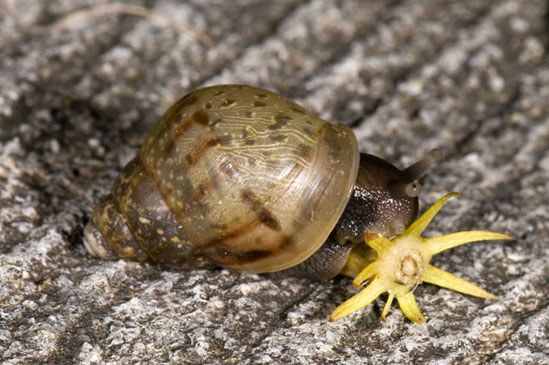
This immature orthalicid, possibly Orthalicus princeps, was found feeding on vegetation in Quartier d’Orleans.
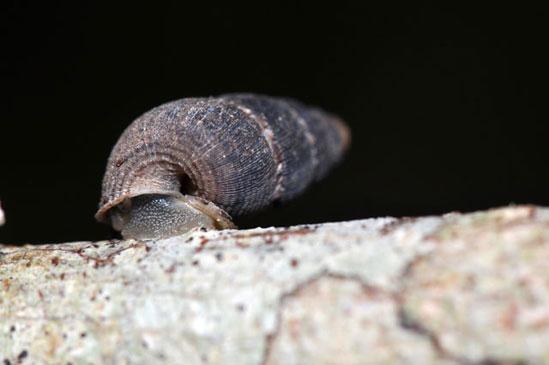
This small annulariid is likely from the genus Chondropoma, which has several species documented on the island.
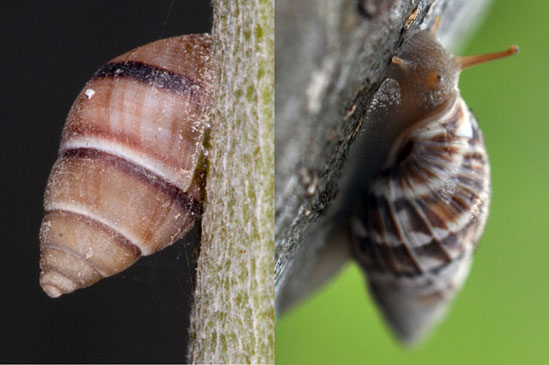
Snails from the family Bulimidae are quite diverse in the Caribbean. On the left is the West Indian bulimulus (Bulimulus guadalupensis), and on the right is Drymaeus elongatus.
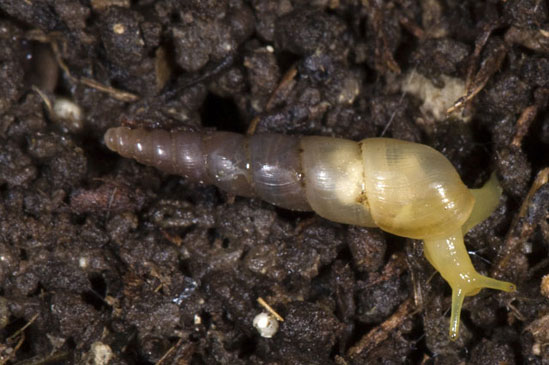
This diminutive snail is a subulimid, probably Opeas sp., which is typically found under boards or rotting logs. They are sometimes known as awlsnails because of their long, skinny shape.
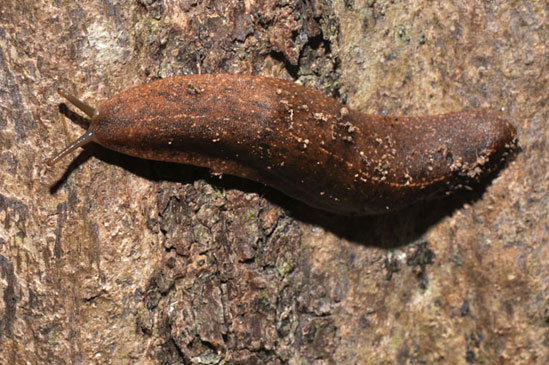
The Caribbean leatherleaf (Sarasinula plebeia) from the family Veronicellidae is found primarily in moist highland forest. It is considered an agricultural pest.
